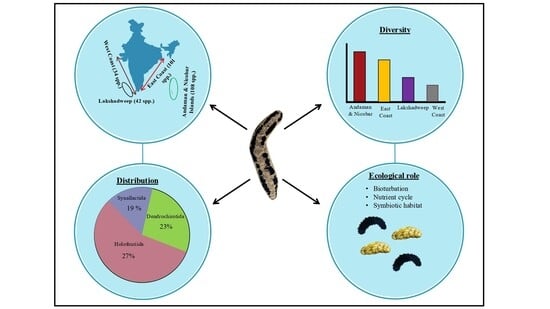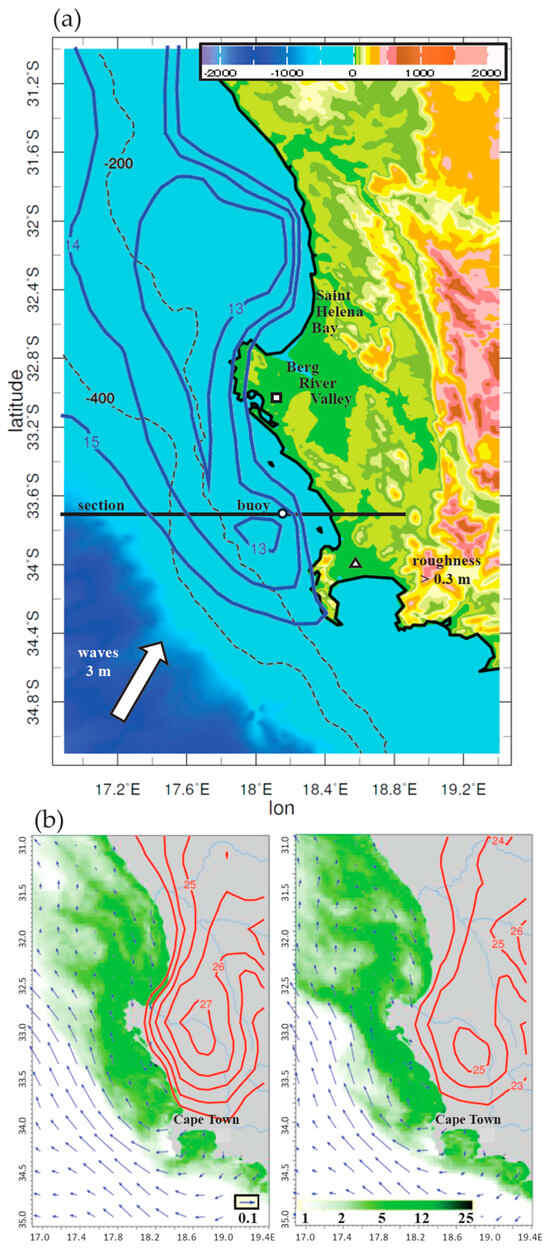- Article
Annotated Checklist and Biodiversity of Sea Cucumbers (Holothuroidea) in Indian Waters
- Karthika Padmini,
- Ameen Ummath and
- Atikulla Shaikh
- + 1 author
Holothuroids play a vital role in nutrient cycling and bioturbation to enhance the marine ecosystem. They enhance the biodiversity for various symbiotic marine organisms by providing essential shelter and spawning grounds. This review focuses on the Class Holothuroidea (Phylum Echinodermata) in Indian waters, encompassing a total of 187 species organized into 7 orders and 21 families. Notably, the order Holothuriida represents the largest proportion of species, accounting for 27%. These species are well-distributed across India, with the Andaman and Nicobar Islands exhibiting the highest level of species richness (107 species), followed by the East Coast (102 species), Lakshadweep (39 species), and the West Coast (34 species). Species diversity was assessed using the Shannon–Weiner diversity index. Results indicate that the Andaman and Nicobar Islands (H’ = 2.23) and the West Coast (H’ = 2.14) demonstrate the highest levels of diversity. This review provides a comprehensive and precise inventory of all species of Holothuroidea reported in Indian waters, which is provided to facilitate understanding of the reported species, their systematics, and distribution. In addition, a significant insight for both conservation and management of sea cucumbers in India has also been provided.
18 December 2025







